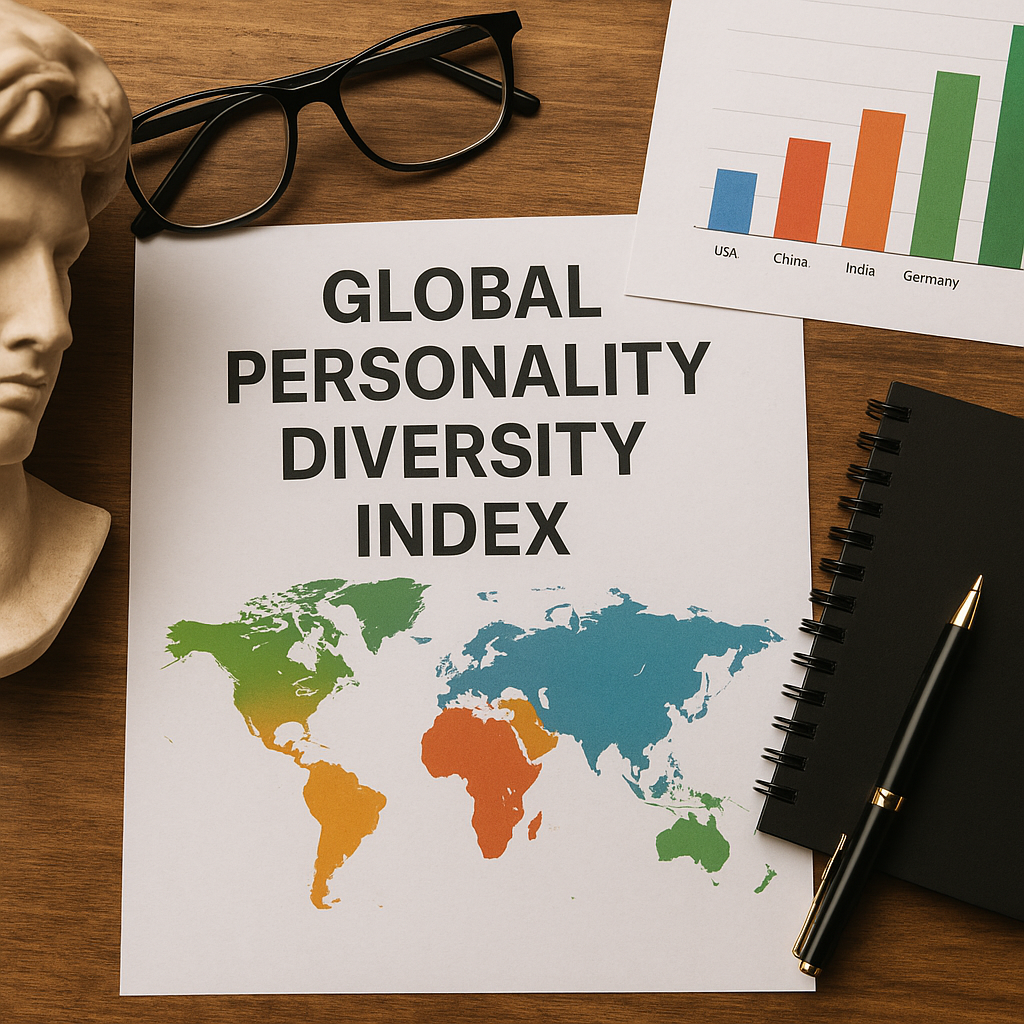In 2025, economists and behavioral scientists are turning their attention to a groundbreaking metric that could reshape how we measure development and prosperity: the Global Personality Diversity Index (GPDI). Unlike traditional indicators that focus on capital or institutions, GPDI offers insight into a society’s psychological complexity—and its unexpected correlation with GDP per capita. But how does personality diversity influence economic performance, and why is it now being recognized as a powerful driver?
What Is the Global Personality Diversity Index (GPDI)?
GPDI is a statistical measure that captures the range and distribution of psychological traits (such as openness, conscientiousness, extraversion, agreeableness, and neuroticism) within a population. Developed from large-scale psychometric surveys, GPDI quantifies how varied a country’s personalities are, reflecting cultural flexibility, innovation potential, and social adaptability.
How Is GPDI Measured?
Researchers use data from personality assessments across countries to calculate variance and diversity scores, which are then normalized into a standardized index. The higher the index, the more diverse the personality makeup of a population.
Origins and Theoretical Foundations
The GPDI concept finds its roots in cross-cultural psychology and behavioral economics. It emerged as researchers began to notice that GDP differences could not be fully explained by infrastructure or education alone. The Big Five personality traits provided a framework for understanding how individual differences shape macroeconomic trends.
Why Personality Diversity Matters for Economies
Cognitive Diversity Fuels Innovation
Societies with greater personality diversity tend to foster a wider array of cognitive styles and problem-solving approaches. This diversity supports creative industries, tech startups, and R&D sectors by enabling cross-disciplinary collaboration.
Resilience Through Behavioral Flexibility
A heterogeneous population is more adaptable during crises. From pandemics to economic recessions, countries with high GPDI often show faster recovery due to diverse risk responses and coping mechanisms.
Productivity and Specialization
Different personality types excel in different roles. Higher GPDI allows for better labor market matching and specialization, increasing overall productivity and satisfaction.
Global Comparison: GPDI and Economic Growth Across Countries
High-GPDI Nations
Countries like the United States, Canada, and the Netherlands typically score high on GPDI, correlating with strong entrepreneurial ecosystems and innovation outputs.
Moderate-GPDI Economies
Nations such as South Korea and Italy have moderate personality diversity, with more traditional but slowly adapting economic models.
Low-GPDI Regions
Homogeneous populations like those in some tightly structured Asian economies may have lower GPDI, which can limit creativity but improve efficiency and coordination.
Cultural Dynamics at Play
The relationship between culture and GPDI is complex. Individualistic cultures may encourage more personality expression, whereas collectivist ones may prioritize conformity.
Future Implications: GPDI and the 2030 Economic Outlook
Role in Global Economic Forecasting
Think tanks and economic modeling platforms are beginning to include GPDI as a predictive metric. It helps estimate a country’s adaptability in rapidly changing global markets.
Behavioral Economics and AI Integration
GPDI data is increasingly being integrated into machine learning models to predict consumer behavior, labor dynamics, and education trends.
Redefining Competitive Advantage
By 2030, countries that nurture psychological diversity may gain a competitive edge—not through cheaper labor or bigger infrastructure, but through smarter, more adaptive populations.
Key Correlations Between GPDI and Economic Metrics
GDP Per Capita
Recent studies demonstrate that GPDI can explain up to 20% of the variance in GDP per capita across nations—rivaling traditional factors like education and infrastructure.
Entrepreneurial Density
Countries with higher GPDI also tend to have more entrepreneurs per capita, possibly due to increased tolerance for risk and novel ideas.
Innovation Index Rankings
Global Innovation Index (GII) data shows a positive trend between GPDI and national performance in science, tech, and patent output.
Applications of GPDI in Policy and Planning
Urban Development and Social Design
Policymakers are using GPDI to design cities and public spaces that cater to a broad range of psychological preferences, improving civic engagement and well-being.
Educational Reform
Education systems in high-GPDI regions are adopting more personalized learning approaches to harness different strengths and learning styles.
Migration Policy
GPDI provides a tool to assess the social integration potential of immigrant populations, helping governments manage diversity more effectively.
What is the Global Personality Diversity Index?
The Global Personality Diversity Index (GPDI) measures the variation of personality traits within a nation’s population. It reflects psychological complexity and correlates strongly with innovation, adaptability, and economic performance.
Pro Tips: How Economists and Policymakers Can Use GPDI
- Incorporate GPDI into long-term economic modeling.
- Use it to guide startup incubation strategies and workforce development.
- Combine GPDI with cultural indices to better predict social cohesion.
- Design flexible education policies aligned with cognitive diversity.
- Track GPDI shifts to anticipate labor market transformations.
- Include GPDI analysis in regional development reports.
- Explore partnerships between behavioral economists and urban planners.
Frequently Asked Questions (FAQ)
Is GPDI an official economic indicator?
Not yet. However, it’s gaining traction in behavioral economics and policy research, particularly among institutions focusing on human capital.
How does GPDI differ from cultural diversity?
Cultural diversity often refers to ethnic or national backgrounds. GPDI focuses on psychological traits that influence behavior, decision-making, and innovation.
Can GPDI be influenced by policy?
Yes. Education, media, and migration policies can shape personality diversity over time through exposure, inclusion, and adaptability programs.
Where can I find GPDI data?
Some academic databases and research labs, such as those using the Big Five Inventory across global samples, provide GPDI-related data.
Does higher GPDI always lead to better outcomes?
While generally beneficial, very high personality variance can pose coordination challenges. The key lies in effective management of diversity.
💬 What’s your view on personality diversity in economic progress? Share your thoughts or research in the comments below!



